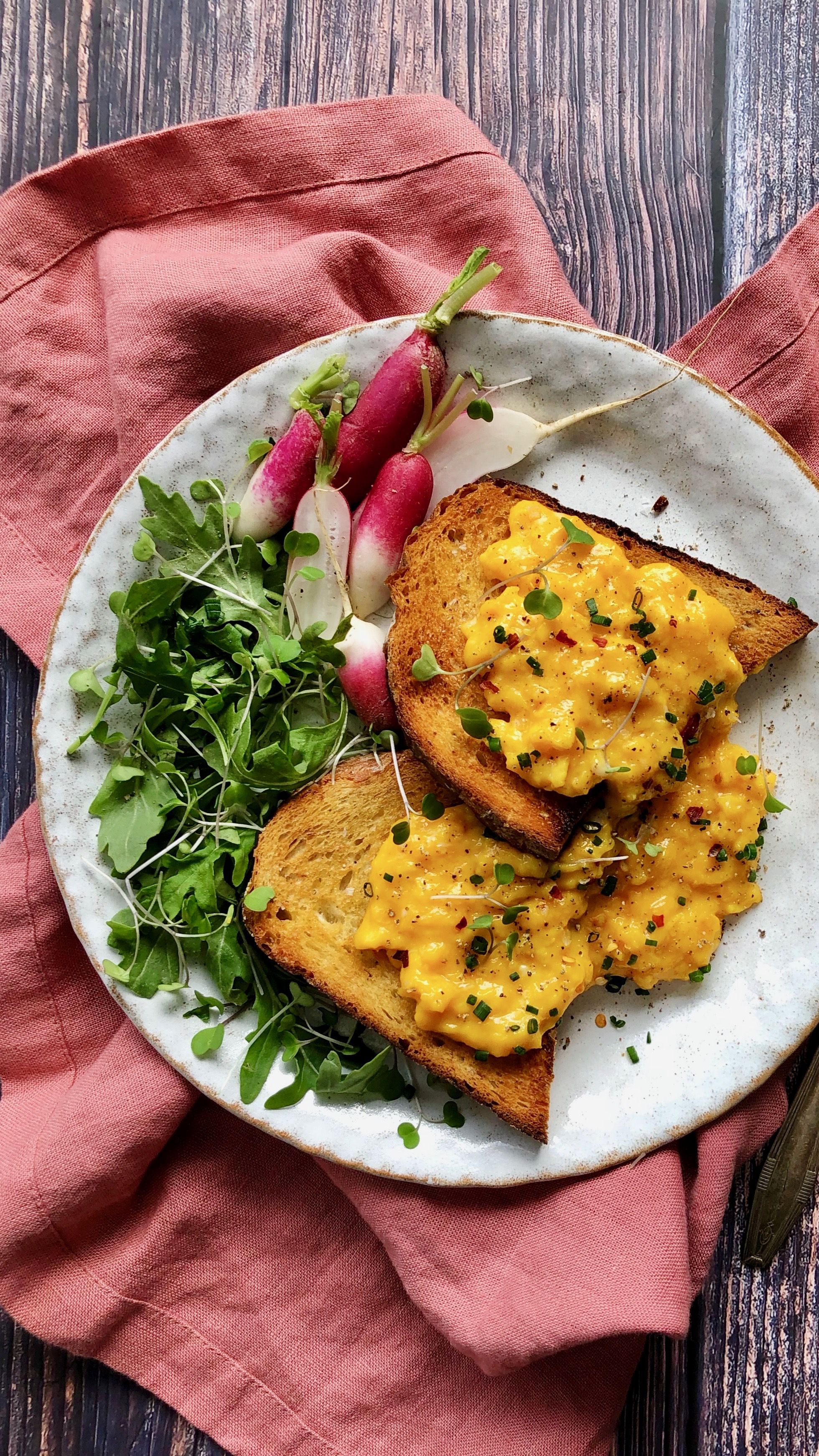French Scrambled Eggs with Chive-Shallot Butter
- ★★
- ★★
- ★★
- ★★
- ★★

A Note from Feedfeed
When it comes to egg cookery, I’d consider myself a self-proclaimed eggspert. Despite my very legitimate title, I recently learned an egg-cooking technique that I’ve yet to crack (hehe). I just enrolled in culinary school at ICE, and our instructor was so kind to let us in on the beauty of a French scramble (AKA soft scrambled eggs). She prefaced the lesson by letting us know that if you prepare eggs like this for someone, they will want to marry you on the spot. Needless to say, she had my undivided attention for the remainder of class.
The key to a perfect curd starts with low heat and a whole lot of patience. If your heat is too high, the eggs will dry out too quickly and the curds will be too large. (You might as well swing by the dining hall if you’re going to cook your eggs like this.) Rather, maintaining low heat and providing constant agitation to the eggs with a rubber spatula yields a fluffy, pillowy texture. It’s not the most exciting process to watch, but if you’re patient and allow the small curds to gradually form, your results will be incredible. Do you want to receive unconditional love by the recipient of this dish or not?!
The day that we had learned about this soft scramble, we also covered compound butters and clarified butter. Because I am an overachiever, I had no other option but to include these techniques in this recipe, as well. Basically, a compound butter is a mixture of butter and other ingredients (think herbs, alliums, citrus zest, etc) that can be used as an indulgent sauce for fish, meat, or veggies. Clarified butter is the process of melting down butter to the point that its milk solids are separated from the pure butterfat and strained off for a bit of liquid gold that has a higher smoking point than regular butter.
Here, I’ve made a compound butter with chives and shallots (but you can use whatever herbs you have on hand), then melted it all down and strained out the solids. This way, chives and shallots impart a subtle flavor into the clarified butter, making the remaining butterfat the perfect fat for scrambling the eggs and toasting the bread. You’ll end up with plenty of extra clarified butter, which you will definitely want to hold onto for future cooking. All this to say, if you just want to cook your eggs in butter, oil or any fat of your choosing, that totally works, too. I’m in culinary school now, so I’m obligated to show off all my new skills. Sorry not sorry!
Want to hear more about my journey through culinary school? Check it out here!
- Recipe Card
- Video
- Related Recipes
Recipe Card
ingredients
- 1 stick unsalted butter, at room temperature
- 1 tablespoon chives, finely chopped, plus more for garnish
- 1 medium shallot, chopped
- 2 thick slices sourdough
- 6 large Handsome Brook Farm Pasture-Raised Organic Eggs, whisked vigorously
- Flaky salt, for serving
- Freshly ground pepper, to taste
Method
Step 1
In a small food processor, combine butter with chives and shallot, and process until incorporated.
Step 2
In a small saucepan over low heat, melt compound butter until milk solids separate from butterfat, about 10 minutes. Strain, reserving clear butterfat and discarding opaque milk solids in the bottom of the pan. This yields about 3 ounces clarified butter.
Step 3
Brush 1 teaspoon clarified butter on each slice of sourdough. Heat a medium cast-iron skillet over medium high heat and toast bread until golden brown, about 3 minutes per side.
Step 4
In a medium nonstick skillet over low heat, add 1 teaspoon clarified butter. Add eggs and agitate by mixing with a heat-safe spatula while gently shaking the pan until small curds begin to form. Cook until mixture is slightly wet, but not runny, about 13-15 minutes. Remove from heat and top with chives, flaky salt, and black pepper. Serve with toast immediately.
